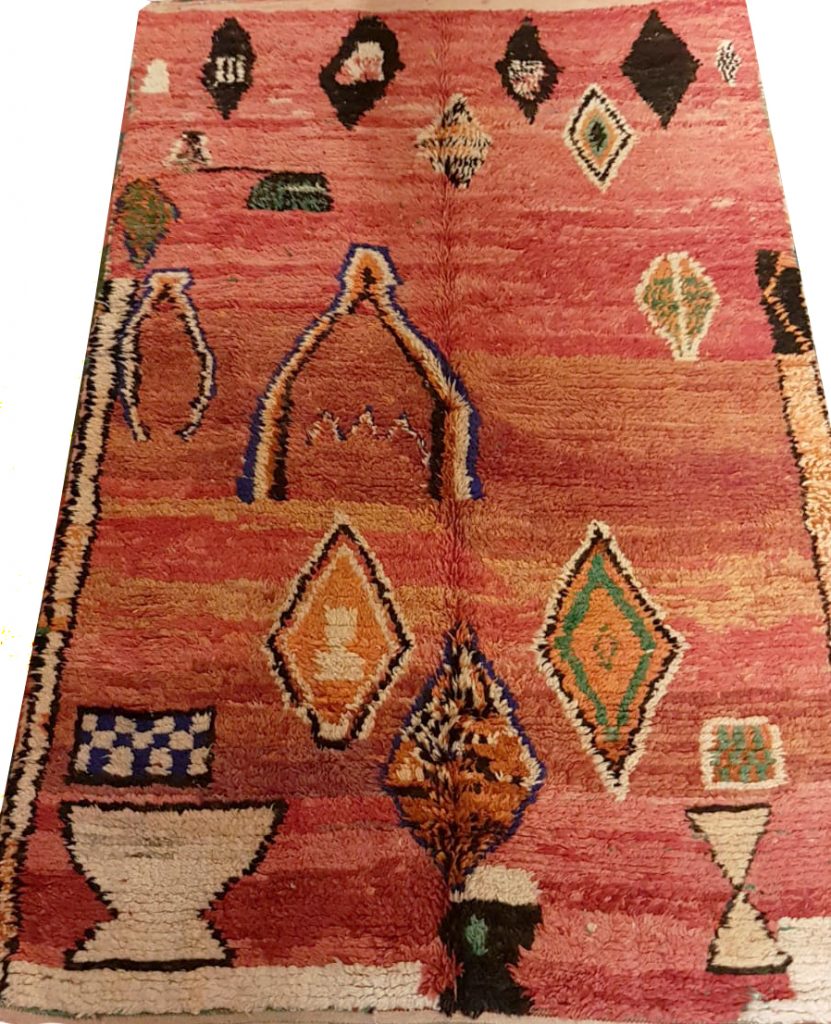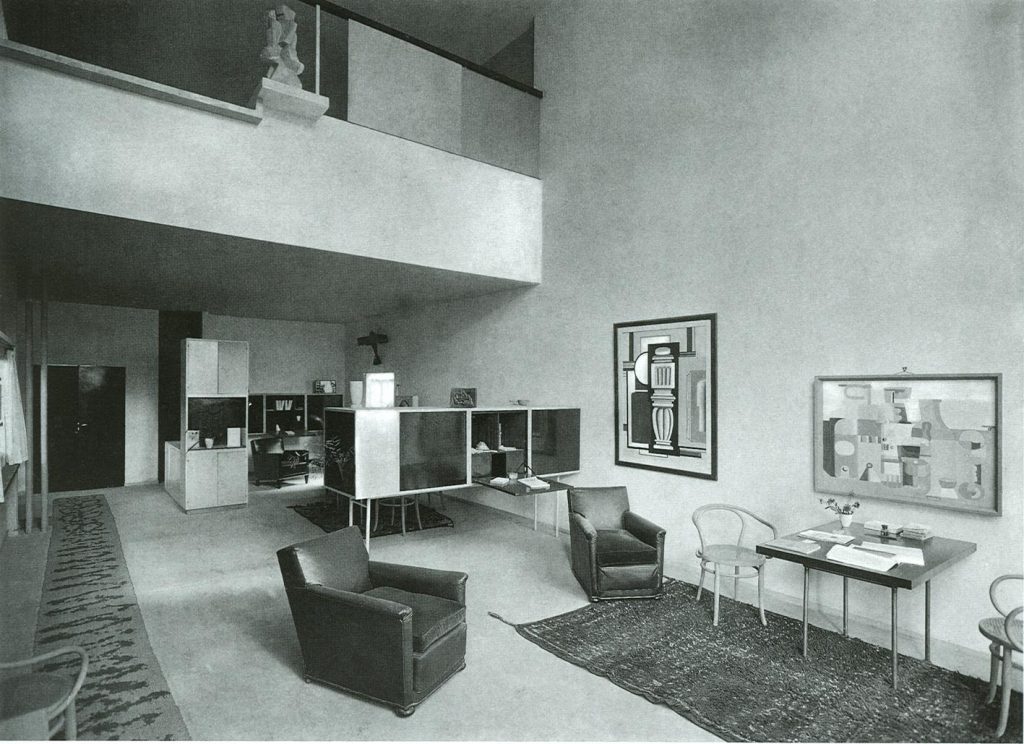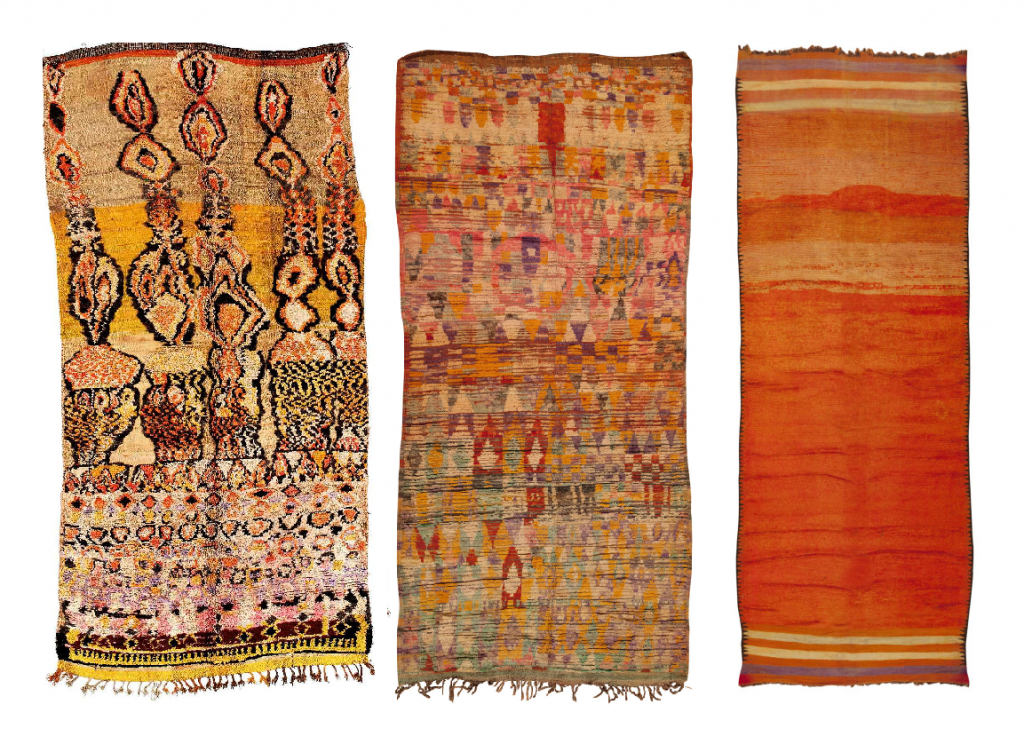
Berber rugs in ‘prayer design’ are not common. If found, they often appear very abstract and more than a glance may be required to find the typical elements characteristic to other, more traditional types of prayer rugs.
Below, is a Berber stylized rendition of a classic Ottoman prayer rug in the so-called ‘coupled column’ design as seen in the early 18th century Karapinar rug from Central Anatolia.

Upon a closer look, the old Bujaad rug with a range of bright (neon-like) colors bears features often found in Anatolian prayer rugs from the city of Melas in westren Turkey.

A colourful Bujaad rug below, feautures a mihrab, a traditional element of prayer design. It is howeber, as befits Berber art, preseneted amids other symbolic motifs and in a completely assymetric arrangement.

The heavy influence of the Ottomans in North Africa (e.g. neighboring Algeria) left a tangible mark in Morooco consisting mainly of luxury objects imported to the country for the wealthy Moroccan families. Those of course include opulent carpets.
Carpet works sprang out in Rabat, the country’s capital, manufacturing replicas of Anatolian designs; a tradition that remained unchanged till today.
Berbers were not spared from the Anatolian influence but they adopted it only in part enriching their own aesthetic styles that pre-date not only the Ottoman’s presence in North Africa but Islam itself.
Berber prayer rugs, as utilitarian mats designated for praying, are rarely found in the Atlas. However, elements alluding to Islamic traditions do appear in Berber art; more often than not, dissociated from their religious significance.
A.G.







